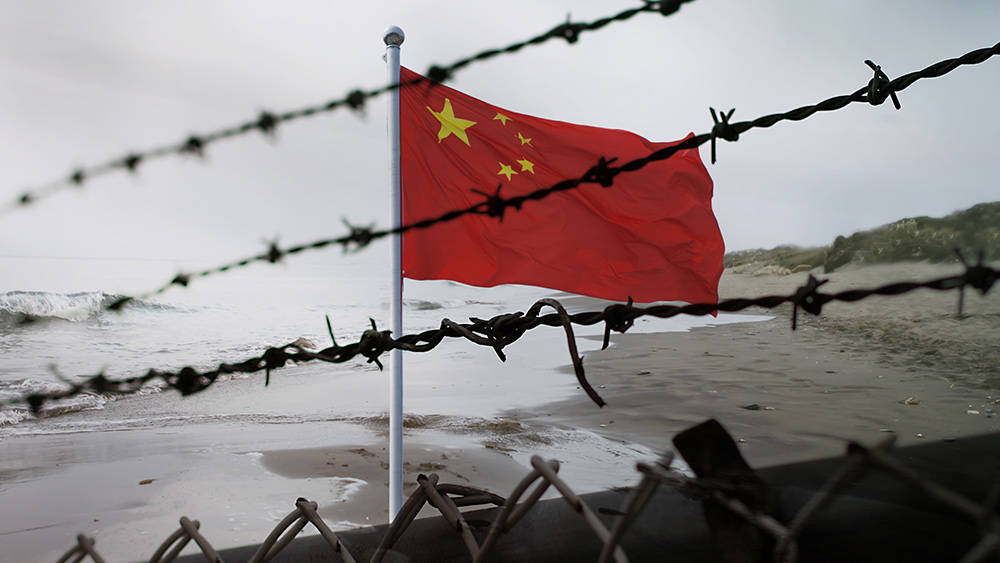Survival tips: How to live without electricity like the Amish
03/09/2022 / By Zoey Sky

For the modern prepper, it may be impossible to imagine life without electricity. After all, the average American home relies a lot on electricity.
But for old-school preppers and homesteaders like the Amish, it’s possible to live simple but fulfilling lives even without electricity. Amish communities in rural Ohio and Pennsylvania, for instance, survive just fine without electricity. (h/t to PreppersWill.com)
Below are some of the ways that the Amish people live without electricity and tips on how you can apply it to the typical American homesteader or prepping lifestyle.
Housing
To build a house in a rural environment and keep the cost of the house and outbuilding down, learn from the Amish. They are hardworking people and they all come together when someone needs help.
If a family needs to build a house, everyone in their community gets together and camps on the family’s land to help build the new structure. When they are building a house, they first choose a site which takes full advantage of the sun and prevailing winds. The structure is then built and insulated properly.
Amish houses like this can use up to 80 percent less fuel for heating and cooling.
Heating and cooling
Heating and cooling costs are some of the biggest expenses of the modern American family. The average American home also wastes a lot of resources.
When building your home, learn from the Amish and place your house facing the south to take advantage of the sun for both heating and lighting needs. And when designing the roof, ensure that the north-facing part of the roof has a steeper side to help snow slide off and prevent snow accumulation on the roof.
Amish homes also use double-paned windows that help retain the heat from wood stoves. Additionally, these homes have insulated walls.
To avoid using electricity to heat your home in the winter or keep it cool during summer, use passive methods and some low-tech methods. (Related: Off-grid essentials: 7 Ways to access well water without electricity.)
Build thicker walls and add more insulation to reduce the heating and cooling costs. You should also install a solar-operated fan in the attic to draw the heat out and keep the house cooler.
Find a way to create a breeze that moves through the house. Install metal screens on your windows and doors and leave them open all night during summer.
Alternatively, you can try another method also used by the Amish: Soak a few towels in cold water and hang them in open doors or windows. The wind will evaporate the cold water and create a cooler breeze.
Food production
Your food production journey will begin by researching what foods grow in your area and growing what your family eats. Home gardening is a rewarding endeavor, but it’s also one that requires a lot of hard work and experience.
Once you get used to it, you might end up growing more food than you consume. After SHTF, you can preserve or sell a surplus of food after harvest season.
Learning how to home can and preserve food are crucial skills that can also save you time and money. These skills are perfect for busy families or professionals who need meals or snack items ready to go.
Food production will also involve raising livestock. Your success also depends on your experience, your willingness to learn and how well you can adapt to the food production requirements of your family.
Lighting
Modern homes often come with electric lighting, but if you build your house facing south, with proper construction and the right alignment, you can significantly minimize your need for electric lighting during the day.
For a portable option, use oil lanterns or solar rechargeable lamps and flashlights which can be recharged using a DIY solar power system.
Manual tools
Modern preppers often rely on convenient electrical tools and appliances, but these things almost always have a manual counterpart that you can keep using even without electricity.
Depending on your needs, you may need manual tools like a juicer in the kitchen or drills and saws in your garage.
Refrigeration
Before the invention of refrigeration, people used to buy dried goods for storage. They went to the farmer’s market for fresh produce.
The Amish used iceboxes that helped preserve food during the hot months, while others built root cellars to store food and other perishable goods.
Wood stoves
Homes in third-world countries have wood stoves that are used for both heating and cooking.
While wood stoves are banned in urban and semi-urban environments because they are considered heavy polluters and a fire hazard, they are still being used in many households to help reduce electricity and gas bills. If local laws allow it, purchase a quality wood stove, then have it installed in your house.
Access to electronics
For most people, it might seem impossible to live without electricity, but you can find a way to combine the best of both worlds. For example, you can set up a solar panel system to power your devices and tools, like a cell phone for communication.
While the goal is to live without electricity, you can still use modern appliances if you can’t do without them. If possible, try to go off-grid and generate your own electricity for free.
More related stories:
Survival basics: Alternative ways to cook without electricity.
Prepping basics: How to wash your clothes without electricity.
Watch the video below for useful prepping tips for beginners.
This video is from the Prepping101 channel on Brighteon.com.
Check out Preparedness.news for more useful prepping tips.
Sources include:
Submit a correction >>
Tagged Under:
amish, disaster, electricity, food freedom, food supply, green living, homesteading, off grid, power grid, preparedness, prepper, prepping, SHTF, survival, survival gear, survivalist, sustainable living, tips
This article may contain statements that reflect the opinion of the author
RECENT NEWS & ARTICLES
COPYRIGHT © 2017 DISASTER NEWS





















